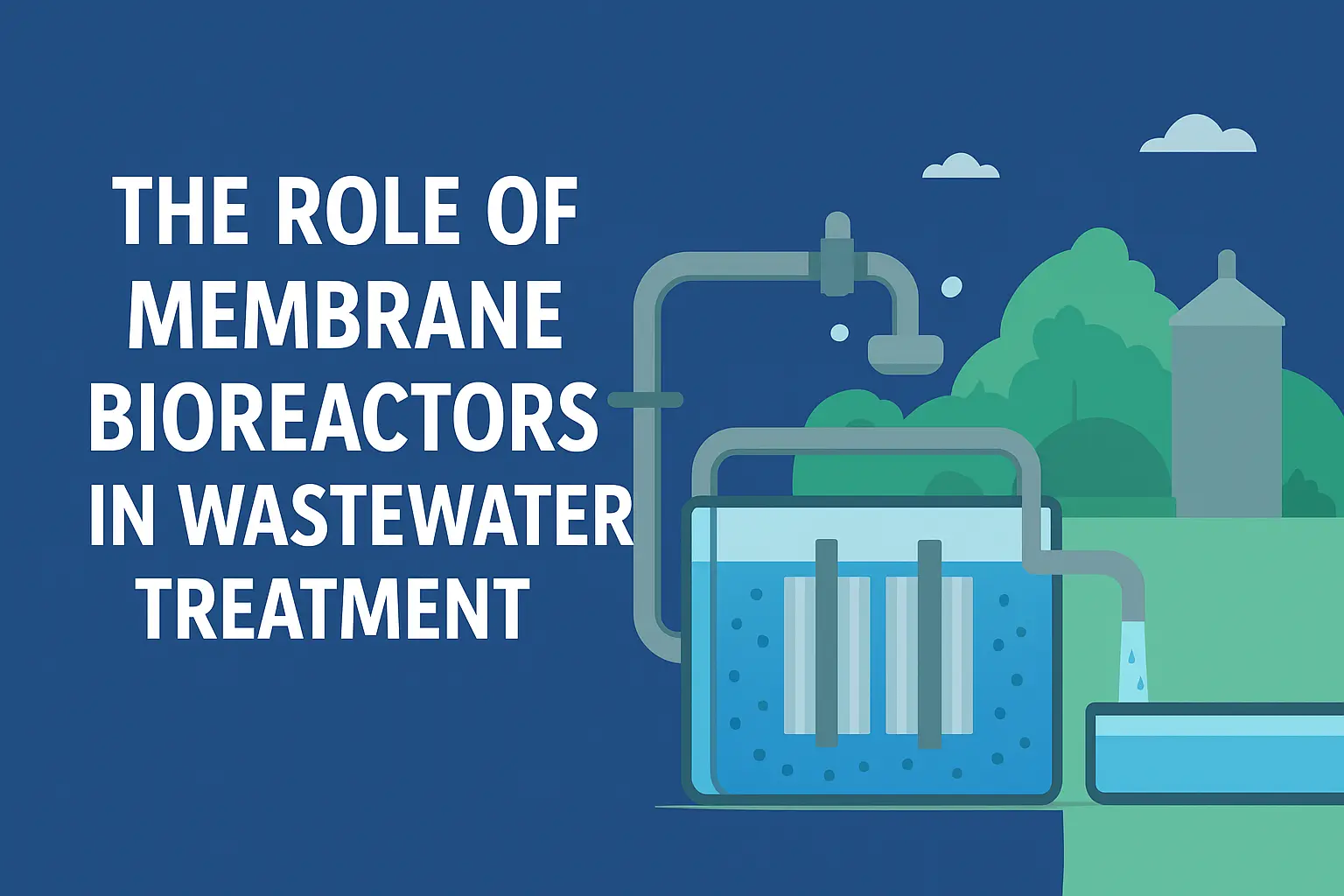Membrane Bioreactors: A Smarter Way to Treat Wastewater
What Exactly Is a Membrane Bioreactor?
Let’s keep this simple. An MBR is basically a mix of two things:
-
A biological process, where bacteria break down waste.
-
A membrane filter, which acts like a super-fine sieve to separate clean water from unwanted particles.
So instead of depending only on settling tanks (like in old-school wastewater plants), the MBR combines biology with advanced filtration. The result? Much cleaner water, smaller plant footprints, and fewer headaches with sludge handling.
If you’ve ever dealt with a clogged filter at home, you’ll appreciate how effective these membranes are. They keep the process flowing smoothly without the constant back-and-forth maintenance that older systems need.
Why Are MBRs So Important in Wastewater Treatment?

Traditional wastewater treatment plants (think activated sludge systems) do a decent job, but they come with issues like big land requirements, smelly sludge, and inconsistent water quality. MBRs were designed to solve many of these problems.
Here’s what makes them stand out:
1. Higher Quality Effluent
The water coming out of an MBR is crystal clear compared to conventional treatment. It’s good enough for reuse in irrigation, industrial cooling, or even feeding into advanced polishing steps for drinking water.
2. Smaller Footprint
MBRs don’t need massive settling tanks, so they take up far less space. That’s a big win for urban areas where land is limited and expensive.
3. Better Removal of Pollutants
From everyday organic waste to tough micropollutants like pharmaceuticals, MBRs handle them better than standard processes. Researchers at places like Harvard and WHO have studied these systems and consistently note their higher performance.
4. Flexibility
They can be used for both municipal wastewater (city sewage) and industrial wastewater (factories, food processing plants, etc.).
Have you ever noticed how some cities recycle their water for parks or fountains? Chances are, they’re using an MBR system behind the scenes.
Future of MBRs
With water scarcity becoming a global issue, MBRs are only going to become more common. Countries in Asia, the Middle East, and Europe are already investing heavily in this technology. Even smaller communities are adopting compact MBR units for sustainable water management.
So, if you’re looking at the future of wastewater treatment, it’s hard to ignore MBRs.
A Closer Look at the Technology
The Membrane
Think of the membrane as a strainer, but way more precise. Instead of catching spaghetti or rice, it captures bacteria, suspended solids, and even many tiny chemical compounds. Two main types are used:
- Microfiltration membranes (larger pores)
- Ultrafiltration membranes (finer pores)
These membranes are submerged right inside the bioreactor tank or set up externally. Both designs have pros and cons, but the submerged option usually saves energy.
The Biological Side
The bacteria do the heavy lifting, breaking down organic matter. In some designs, aerobic digestion (with oxygen) also helps generate biogas, which can be used as an energy source. It’s like turning waste into something useful.
Why Operators Choose MBRs (Practical Benefits)
From my own experience reading case studies and visiting treatment plants, operators love MBRs for a few reasons:
-
Consistency: Even when the incoming wastewater changes (say, after heavy rain), the output quality stays stable.
-
Less Sludge: They generate less excess sludge compared to traditional systems, which means lower disposal costs.
-
Energy Savings: Modern MBRs have been optimized to use less power than older versions, making them more cost-effective in the long run.
One plant manager once joked to me, “It’s like upgrading from a flip phone to a smartphone, you can’t imagine going back.”
Are There Any Downsides?
Of course, nothing’s perfect. A few challenges do come with MBRs:
- Initial cost: The setup is pricier than conventional plants.
- Membrane fouling: Over time, membranes can get clogged and need cleaning.
- Skilled operation: They require trained staff to keep things running smoothly.
But the advantages usually outweigh these drawbacks, especially as technology keeps improving.
Where Are MBRs Used?
- Municipal plants: To handle sewage and produce water safe for reuse.
- Industrial facilities: Especially food, beverage, and pharmaceutical industries that need reliable treatment.
- Emergency setups: In disaster-hit areas, compact MBR units can quickly provide safe water.
Some aquariums and smaller setups even use simplified versions of MBRs to keep water pristine.
Final Thoughts
Wastewater treatment might not be the most glamorous topic, but it’s one of the most important for our health and environment. Membrane bioreactors are proof of how far we’ve come, from bulky, odor-heavy plants to compact, efficient systems producing clean water fit for reuse.
Remember, clean water isn’t a luxury. It’s a necessity. And MBRs are helping us get closer to a future where every drop is valued.
If you found this guide helpful, don’t forget to check out my other blogs on water and environmental technologies. Small steps like learning about these systems bring us closer to sustainable living. You’ve got this.
FAQs
Q1. What’s the difference between MBR and traditional wastewater treatment?
MBRs use membranes for filtration, which produces much cleaner water compared to settling tanks.
Q2. Can MBR-treated water be reused?
Yes, it’s often reused for irrigation, industrial use, or further treated for drinking.
Q3. Do MBRs save space?
Definitely. They take up far less space than conventional plants.
Q4. Are MBRs expensive to run?
The start-up cost is high, but modern systems are energy-efficient and save money long-term.
Q5. Do membranes clog easily?
They can foul, but regular cleaning and modern designs reduce this problem a lot.
